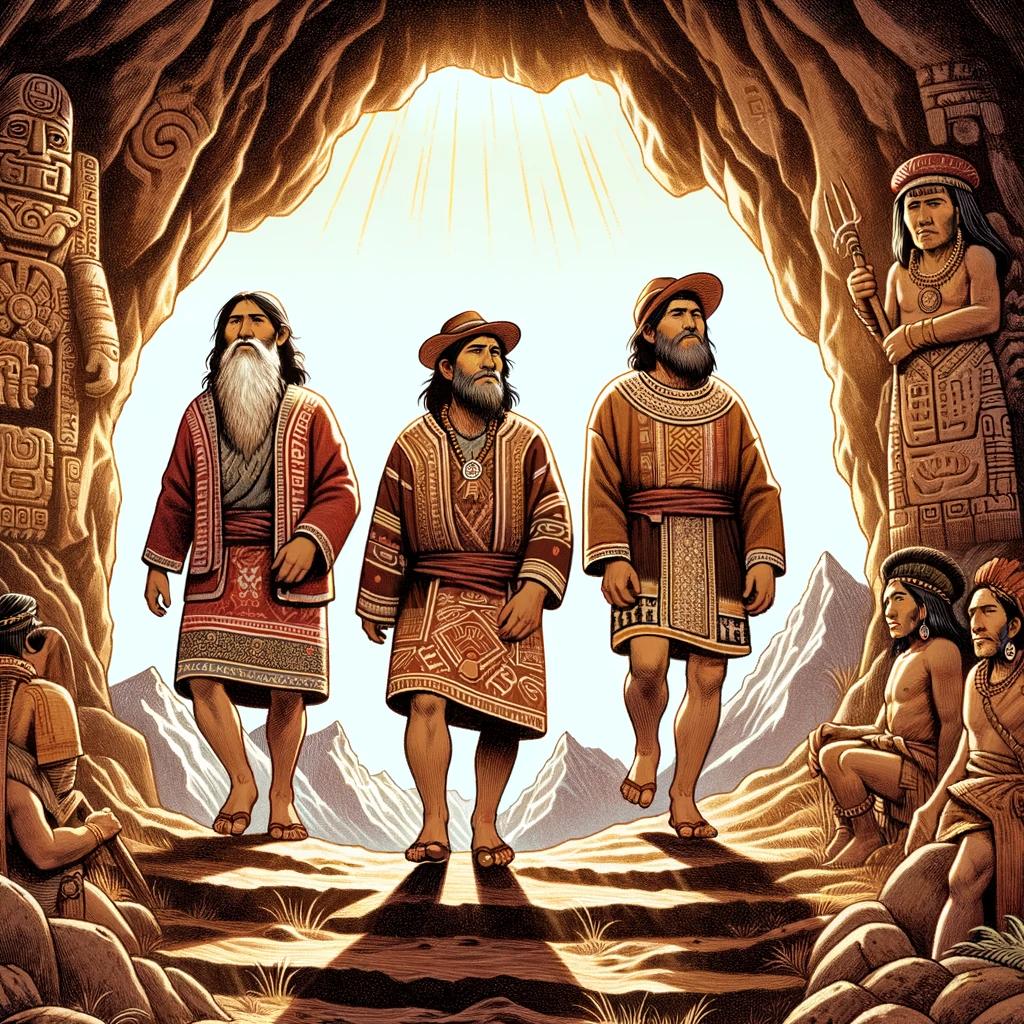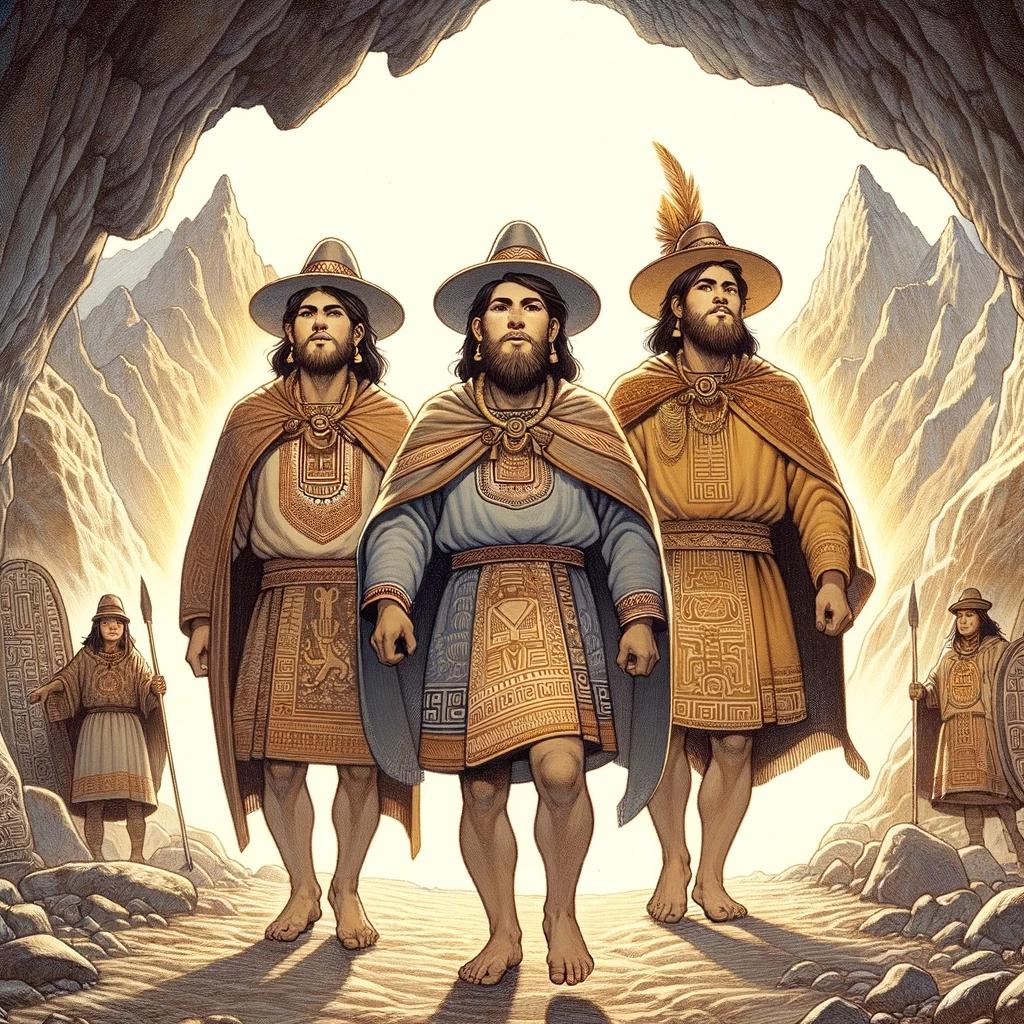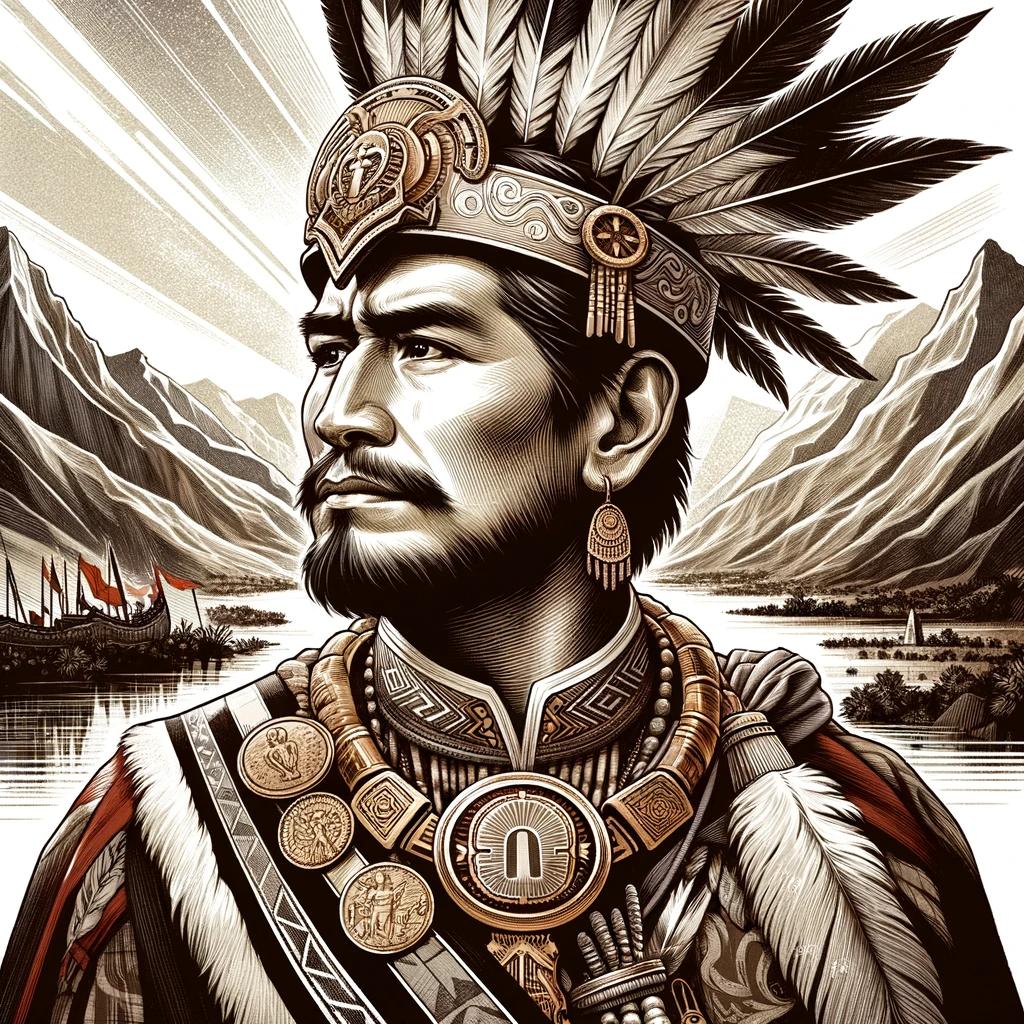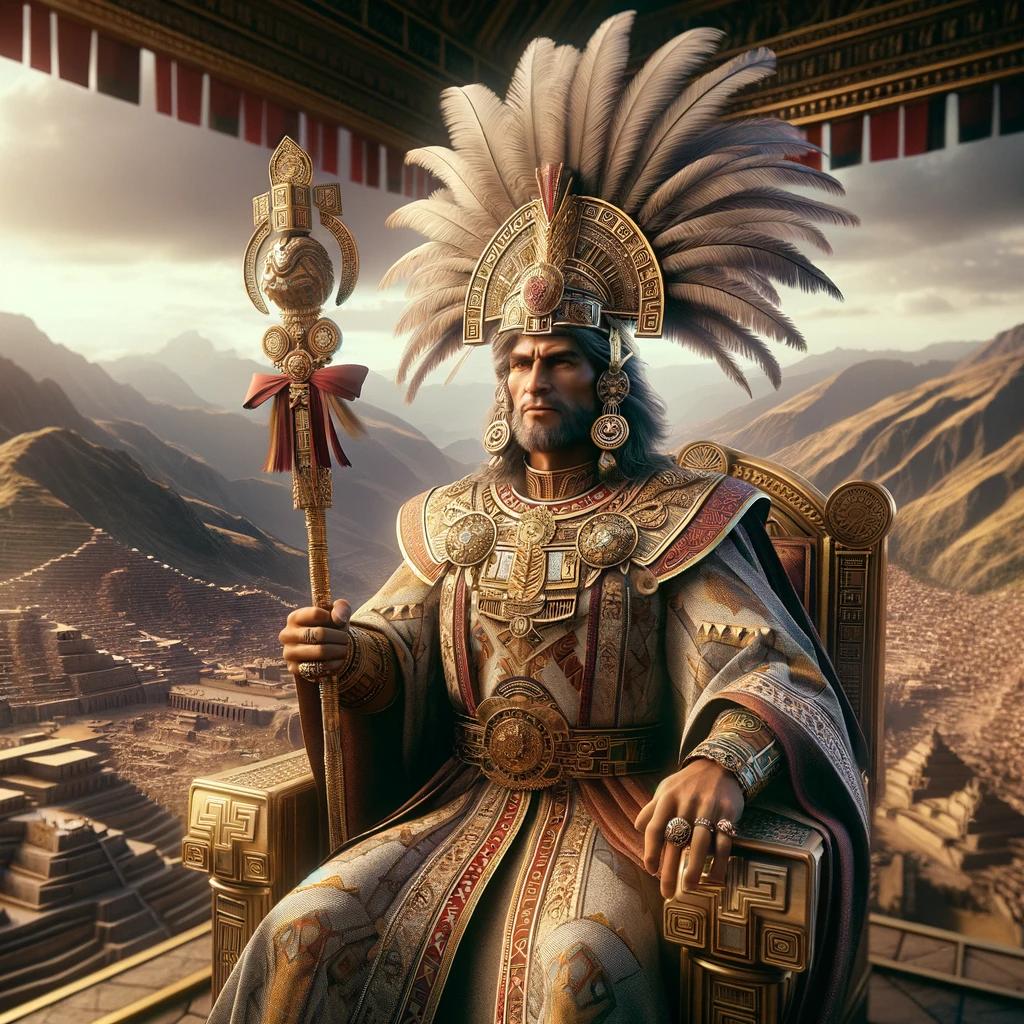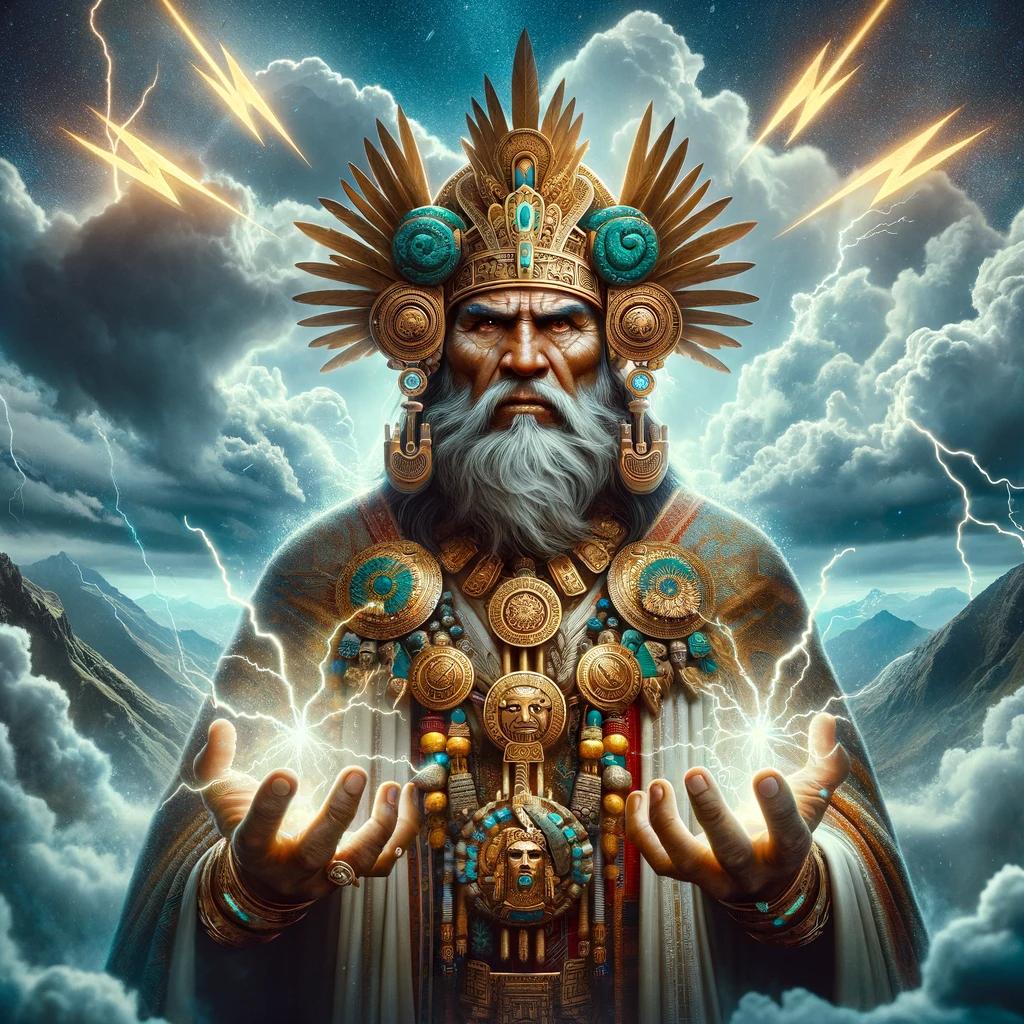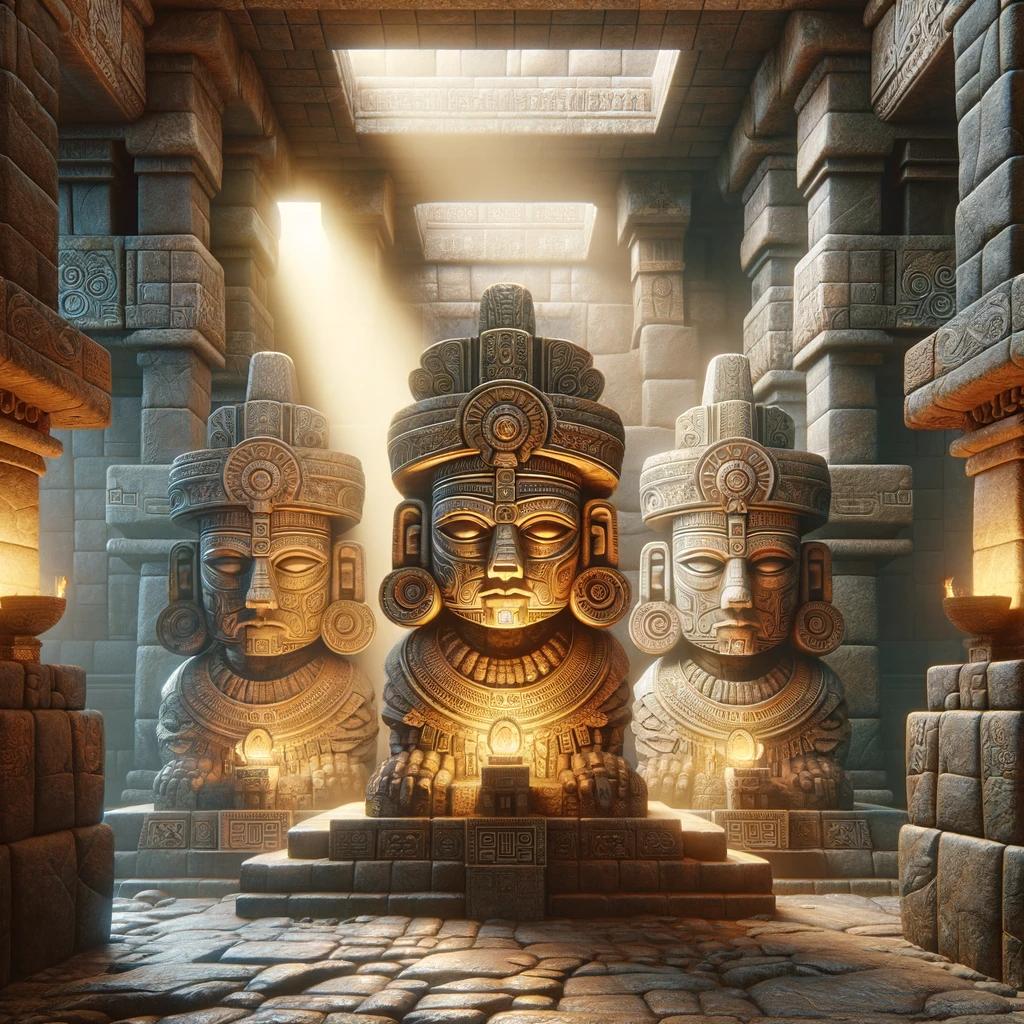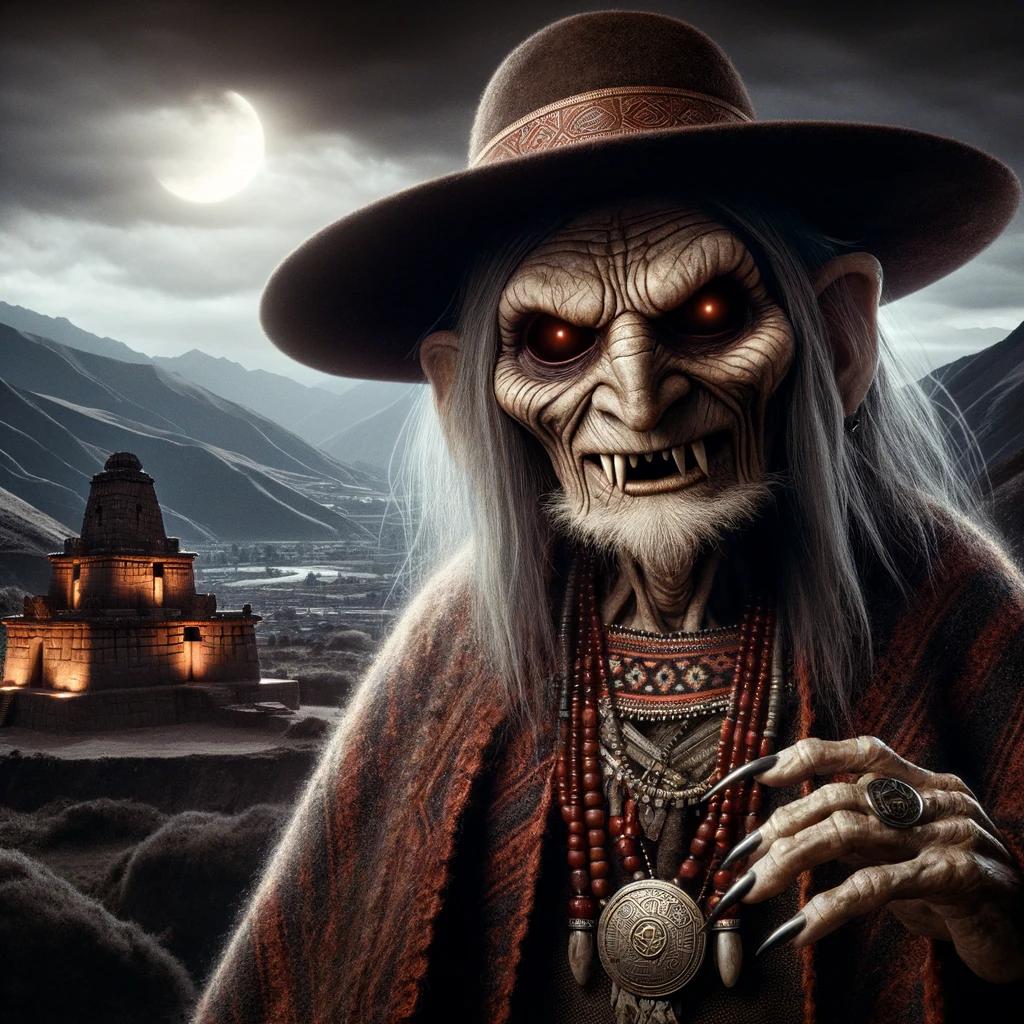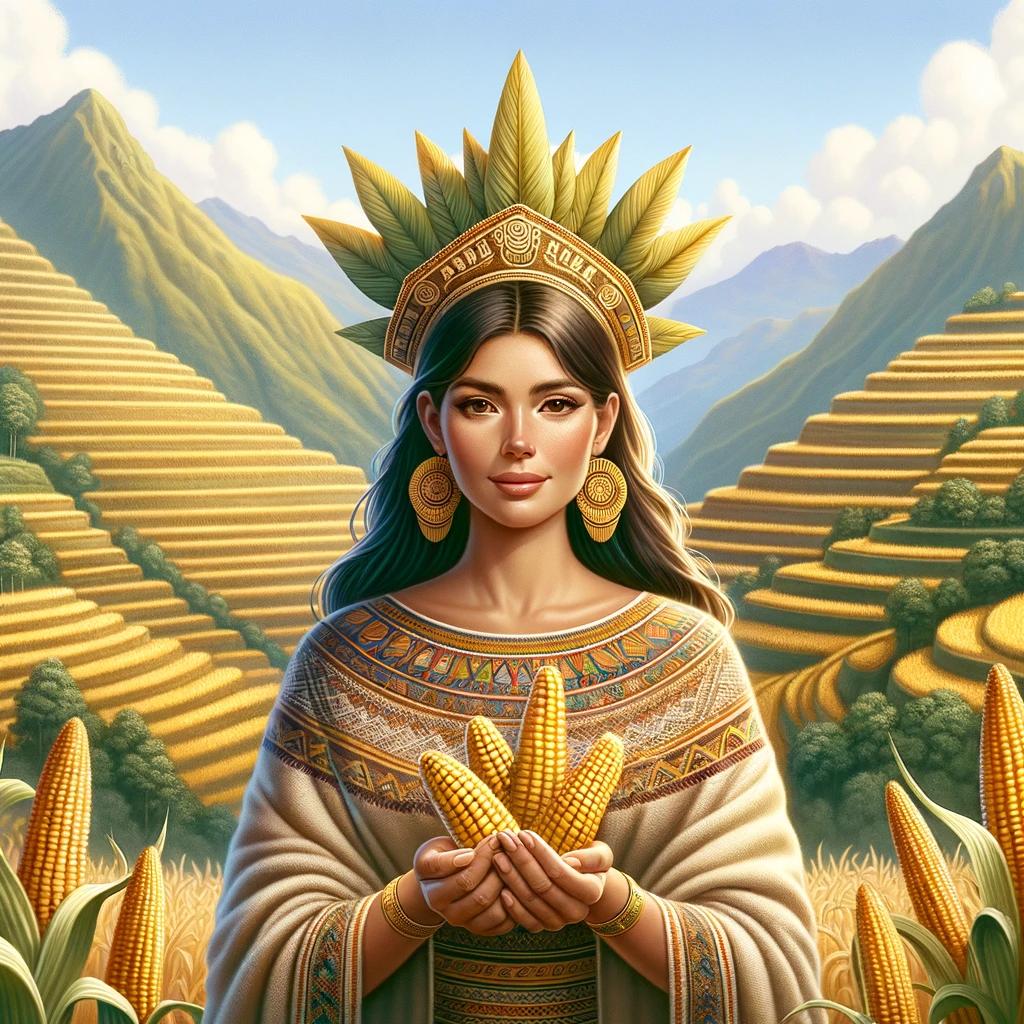Inca Ayar Manco: Unveiling the Forgotten Hero of Ancient Inca Empire
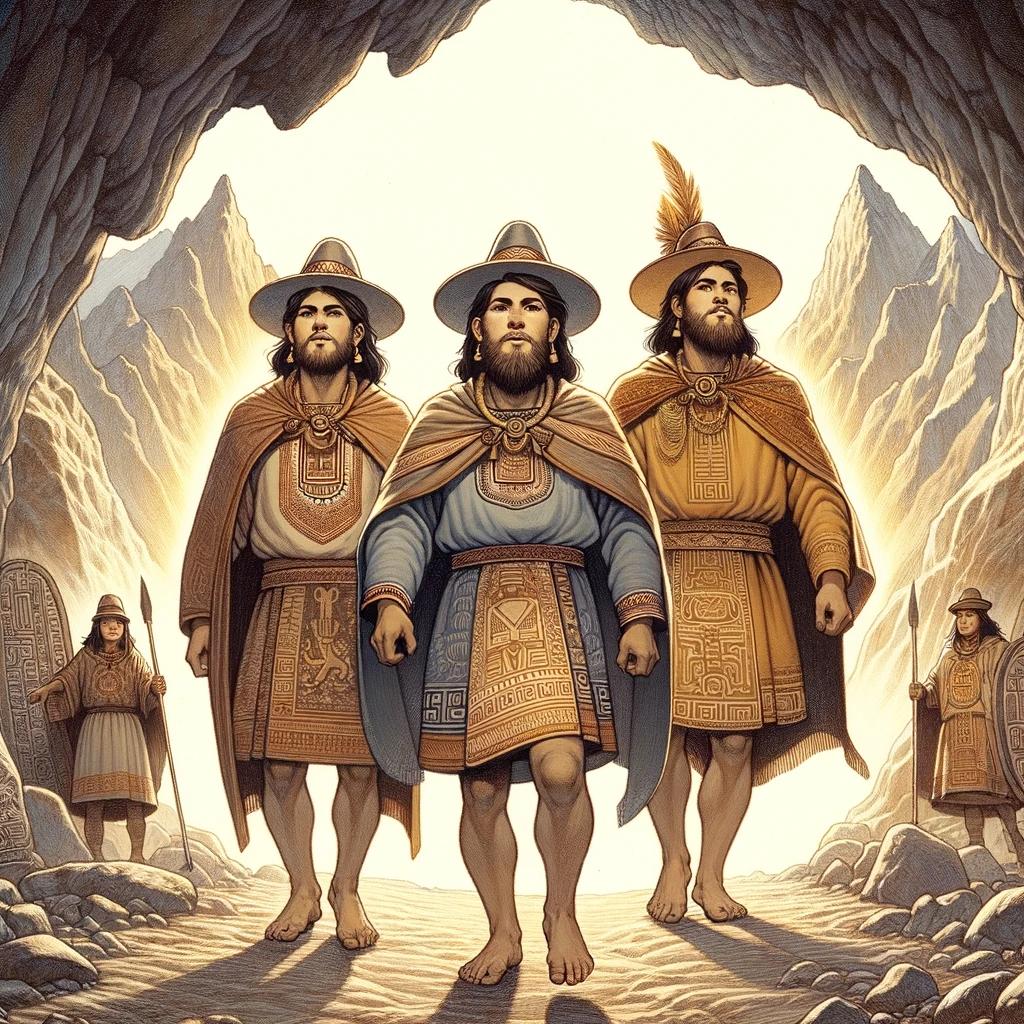
The legend of Inca Ayar Manco marks the origin of the mighty Inca Empire. Emerging from the mountain Pacaritambo, Ayar Manco and his siblings embark on a journey filled with betrayal, divine connections, and the founding of Cusco.
Ayar Manco’s leadership paves the way for the rise and expansion of the Inca Empire, leaving a lasting cultural and historical legacy. The sacred city of Machu Picchu stands as a testament to the Incas’ architectural prowess, while the Ayar brothers’ tragic fate and Lake Titicaca’s significance further enrich the Inca mythology.
Explore the Cusco Valley to uncover traces of this remarkable civilization and rediscover the enduring influence of Inca Ayar Manco.
The Origin of Inca Ayar Manco
The story of Inca Ayar Manco begins with the emergence of the Ayar brothers from Pacaritambo mountain. According to legend, after a great flood, Ayar Manco and his siblings, Ayar Cachi, Ayar Uchu, and Ayar Auca, emerged from the mountains accompanied by their wives, who were also their sisters.
This extraordinary event marked the beginning of the Inca Empire.
The Ayar Brothers’ Emergence from Pacaritambo
After the devastating flood, the Ayar brothers emerged from the sacred mountain of Pacaritambo. It is said that they were chosen by the gods to be the founders of a great civilization.
Each brother possessed unique qualities and strengths that played a significant role in their journey to establish the Inca Empire.
The Legend of Ayar Manco and His Siblings
In the legend, Ayar Manco, described as a wise and charismatic leader, stood out among his brothers. Overcoming challenges and facing betrayals, Ayar Manco navigated through treacherous territories to find a suitable location for the future capital of the empire.
This epic tale highlights the trials and tribulations the Ayar brothers faced in their quest for greatness.
Manco Capac and Mama Ocllo: The Founders of Cusco
The story of Inca Ayar Manco continues with the founding of Cusco, the capital city of the Inca Empire. This section delves into the journey of Manco Capac to Cusco and the establishment of the Golden Staff as the symbol of leadership.
Manco Capac’s journey to Cusco
According to legend, Manco Capac embarked on a sacred journey from Lake Titicaca to find the ideal place to establish a great city. With Mama Ocllo, his sister and wife, by his side, they set forth on this significant expedition.
Throughout their journey, they faced various trials, overcoming obstacles and connecting with the land.
Establishing the Golden Staff as the Symbol of Leadership
Upon their arrival in Cusco, Manco Capac and Mama Ocllo laid the foundation stone of the city’s central plaza. To establish their authority and symbolize their divine connection, they introduced the Golden Staff, a sacred object associated with leadership and power.
The Golden Staff represented the rulers’ duties, responsibilities, and their close ties with the gods.
The journey of Manco Capac and Mama Ocllo to Cusco and the establishment of the Golden Staff form the bedrock of the Inca Empire’s foundation.
This tale highlights their divine mission, leadership qualities, and their crucial role in shaping the future of the Inca civilization.
The Inca Empire: Rise and Expansion
The Inca Empire, under the leadership of Ayar Manco, witnessed a period of substantial growth and consolidation of power. This section explores the reign of Manco Capac and the expansion of the Inca Empire achieved during Ayar Manco’s rule.
Manco Capac’s Reign and the Consolidation of Power
Manco Capac, the legendary first Sapa Inca (emperor) of the Inca Empire, played a crucial role in solidifying the foundation of the empire. During his reign, Manco Capac established robust administrative structures and implemented effective governance systems.
He centralized power, ensuring the continuity and stability of the empire.
Expansion of the Inca Empire under Ayar Manco’s Rule
Guided by Ayar Manco’s vision and strategic prowess, the Inca Empire expanded its territorial influence quickly. Ayar Manco led conquests into neighboring regions, assimilating diverse cultures, and incorporating them into the Inca way of life.
This expansion allowed the empire to flourish both economically and politically.
The Divine Connection: Inti, the Sun God
The Inca civilization held a strong belief in the divine connection between their ruler, Ayar Manco, and Inti, the Sun God. According to Inca mythology, Ayar Manco was believed to be the son of Inti, chosen to lead his people and establish the Inca Empire.
This divine heritage bestowed upon Ayar Manco a sense of sacred duty and authority, as he was considered a representative of Inti on Earth.
Ayar Manco’s Divine Heritage and Connection to Inti
As the chosen leader, Ayar Manco’s divine heritage was central to his role in Inca society. He was revered as a significant figure, and his connection to Inti symbolized the Inca Empire’s close relationship with the Sun God.
It was believed that Inti bestowed his blessings and guidance upon Ayar Manco, guiding his actions and ensuring the prosperity and well-being of the empire. This divine connection gave Ayar Manco a sense of legitimacy and authority among his people.
The Importance of Sun Worship in Inca Culture
Sun worship played a crucial role in Inca culture, reflecting the central belief in the powerful and life-giving force of the Sun. The Inca people regarded Inti as the primary deity and considered him the source of all life.
They believed that by honoring and appeasing Inti through rituals and offerings, they would ensure favorable conditions for agricultural productivity, the well-being of the empire, and the prosperity of the people.
Sun worship ceremonies were intricate and carried out with great reverence. Priests and nobles would lead elaborate rituals to show gratitude to Inti, often involving music, dance, and offerings of food, livestock, and other valuable items.
These ceremonies reinforced the belief in Ayar Manco’s divine connection as the leader chosen by Inti and emphasized the importance of maintaining a harmonious relationship with the Sun God to ensure prosperity and protection for the Inca Empire.
The divine connection between Ayar Manco and Inti not only played a significant role in the religious and spiritual beliefs of the Inca people but also served as a source of inspiration and strength for their leader.
The Inca Empire’s success and expansion were attributed to Ayar Manco’s connection to the divine, highlighting the deep-rooted belief in the intertwining of earthly and heavenly powers within Inca society.
Machu Picchu: The Sacred City of the Incas
Perched high in the Andes Mountains of Peru, Machu Picchu stands as a testament to the ingenuity and brilliance of the ancient Inca civilization. This sacred city, hidden away for centuries, continues to captivate the world with its breathtaking beauty and enigmatic mysteries.
Unveiling the Magnificence of Machu Picchu
As you step foot in Machu Picchu, you’ll be greeted by a panorama of awe-inspiring landscapes. Towering peaks, lush green valleys, and cascading rivers create a breathtaking backdrop for the city’s impressive architectural marvels.
Wander through the intricate stone pathways and marvel at the precision of Inca engineering. Witness the expertly crafted terraces that once sustained agricultural practices and provided sustenance for the inhabitants of this mountain sanctuary.
Stand in awe before the Intihuatana, a unique stone structure believed to have served as a solar observatory and spiritual center. Feel the energy resonate through the Temple of the Sun, a testament to the Incas’ reverence for the celestial forces.
Exploring the Ancient Ruins and Its Historical Significance
Beyond its breathtaking beauty, Machu Picchu holds profound historical significance. It was believed to be a retreat and spiritual haven for Inca royalty, its purpose still shrouded in mystery.
Discover the intricacies of Inca city planning as you navigate the residential areas and witness the remarkable preservation of structures like the Temple of the Three Windows and the Royal Tomb.
Gain insight into the daily lives of the Incas and their rich cultural traditions.
As you explore, listen to the whispers of history that echo through the stone walls. Imagine the ceremonies that took place in the Sacred Plaza and the sacred rituals performed by Inca priests and nobles.
Machu Picchu’s designation as a UNESCO World Heritage Site and one of the New Seven Wonders of the World only adds to its allure. Its preservation and ongoing research offer glimpses into the lives of the Inca people and their profound connection with nature and the divine.
- Marvel at the Temple of the Sun, where the Incas sought spiritual guidance from Inti, the Sun God
- Immerse yourself in the sacred energy of the Intihuatana, a sacred rock believed to have been an astronomical and spiritual center
- Admire the precision and sophistication of Inca stonework in the Temple of the Three Windows
- Explore the residential areas and gain insight into the daily lives of the Inca nobility
- Discover the Royal Tomb and its significance in Inca burial practices
The Ayar Brothers’ Tragic Fate: Turned into Stone
The Ayar brothers, Ayar Cachi, Ayar Uchu, and Ayar Auca, faced tragic fates in their journey.
Each brother encountered challenges that led to their transformation into stone.
Ayar Cachi’s Betrayal and Imprisonment
Ayar Cachi, known for his strength and thunderous abilities, was betrayed by his jealous siblings. They lured him into a sacred cave called Pacarina under false pretenses, then enclosed him by placing a massive stone at the entrance.
In a fit of rage, Ayar Cachi unleashed his power, opening the mountains and shaking the sky, but his imprisonment was inevitable.
Ayar Uchu and Ayar Auca’s Journey Ends in Petrification
Continuing their journey, Ayar Uchu and Ayar Auca arrived at Huanacaure mountain, where they encountered an idol of the same name.
With fear in their hearts, they entered the sacred place but Ayar Uchu defied the idol. As a consequence, he was turned into stone, warning his brothers to press on. Ayar Auca, in search of a place to settle, developed wings and landed in La Pampa Del Sol, where he too was transformed into stone.
The Ayar brothers’ tragic fate symbolizes the challenges and sacrifices faced on the path to greatness. Their petrification serves as a reminder of the struggle for power and the consequences that betrayals can bring within Inca mythology.
Inca Mythology and Cultural Significance
The Inca Mythology revolving around Ayar Manco and his brothers holds immense cultural significance in ancient Inca culture. Believed to be descendants of gods, the Ayar Brothers were seen as foundational figures in shaping Inca beliefs, traditions, and societal structure.
The Role of Ayar Manco in Inca Mythology
Ayar Manco, as the sole surviving brother, played a pivotal role in the mythology of the Inca civilization. He was not only the founder of the city of Cusco but also the first Sapa Inca, the supreme leader of the Inca Empire.
Ayar Manco was revered as a divine figure, chosen by Inti, the Sun God, to rule and guide the Inca people.
According to the mythology, Ayar Manco was not only a political leader but also a spiritual figure.
He was believed to possess a direct connection with the gods, bridging the gap between the mortal world and the divine realm. This connection bestowed upon him the authority to enact religious ceremonies, make offerings to the gods, and maintain the spiritual well-being of the Empire.
The Ayar Brothers’ Symbolic Representation in Inca Culture
Beyond Ayar Manco’s individual role, the Ayar Brothers collectively held symbolic significance in Inca culture. Each brother represented different aspects of Inca society, encapsulating values, skills, and attributes that were held in high regard.
- Ayar Cachi: Known for his immense strength and ability to summon thunderstorms, Ayar Cachi symbolized power and protection. He epitomized the Inca warrior spirit and was associated with the defense of the Inca Empire.
- Ayar Uchu: Ayar Uchu represented the bravery and audacity necessary to challenge established norms.
Despite facing consequences, he dared to defy tradition and established order, showcasing the importance of questioning and progress in Inca society.
- Ayar Auca: Ayar Auca, the brother who ventured to new territories and possessed wings to fly, embodied exploration, curiosity, and the pursuit of knowledge.
He symbolized the Inca’s quest for expansion, discovery, and the constant search for new horizons.
Together, these brothers depicted the diverse aspects that contributed to the strength, unity, and complexity of the Inca Empire.
Their individual attributes were celebrated and admired, serving as role models for different facets of Inca life.
Inca mythology and the symbolic representation of the Ayar Brothers played a fundamental role in shaping the cultural identity and worldview of the Inca people.
These stories and beliefs continue to endure, reflecting the rich heritage that still captivates and fascinates us today.
Exploring the Cusco Valley: Traces of Inca History
Embark on a captivating journey through the Cusco Valley, where the echoes of Inca civilization still resonate. Discover the rich heritage left behind by the Ayar brothers and witness the magnificent historical sites and monuments that define this region’s significance.
Historical Sites and Monuments in the Cusco Valley
Immerse yourself in the captivating history of the Cusco Valley as you explore its remarkable historical sites and monuments. From the awe-inspiring fortress of Sacsayhuaman to the enigmatic ruins of Pisac and the ancient agricultural terraces of Moray, each site unveils intricate architectural marvels and offers a glimpse into the prosperous Inca past.
- Sacsayhuaman: Marvel at the colossal stone walls and intricate stonework of this ancient fortress, which served as a strategic military stronghold for the Incas.
- Pisac: Wander through the terraced slopes of Pisac and explore its expansive ruins, including impressive agricultural terraces, temples, and residential areas.
- Moray: Delve into the mysteries of Moray’s circular terraces, believed to have been agricultural experimental sites used by the Incas.
Uncovering the Legacy of the Ayar Brothers in the Region
Uncover the lasting legacy of the Ayar brothers and their significant role in shaping the Inca Empire.
As you traverse the Cusco Valley, witness the remnants of their influence and explore the cultural impact they left behind.
- The Ayar Museum: Visit the Ayar Museum in Cusco to gain a deeper understanding of the Ayar brothers’ contributions to Inca history and their mythical origins.
- Amaru Machay: Encounter the sacred site of Amaru Machay, where legend has it that Ayar Cachi was imprisoned, and experience the mystical atmosphere surrounding this ancient cave.
- Wiraqocha Temple: Explore the ruins of the Wiraqocha Temple, believed to have been a ceremonial center dedicated to the worship of the Sun God, Inti.
As you explore the Cusco Valley, each step reveals the remnants of an ancient civilization and unlocks the secrets of Inca Ayar Manco and his brothers.
From the impressive architectural marvels to the rich cultural heritage, immerse yourself in the wonders of the Cusco Valley and relish in the traces of Inca history that continue to captivate visitors to this day.
Lake Titicaca: The Sacred Birthplace of the Ayar Siblings
The mythical origins of the Ayar brothers at Lake Titicaca hold great significance in Inca culture. According to legend, Lake Titicaca is considered the sacred birthplace of the Ayar siblings. It is believed that they emerged from the depths of the lake, chosen by the gods to lead and shape the destiny of the Inca Empire.
The Mythical Origins of the Ayar Brothers at Lake Titicaca
Lake Titicaca, located on the border between Peru and Bolivia, captivates with its breathtaking beauty and mystical aura. In Inca mythology, it is believed that the Ayar brothers, Ayar Manco, Ayar Cachi, Ayar Uchu, and Ayar Auca, were created by the god Inti and the goddess Mama Cocha.
Legend has it that these divine siblings emerged from the depths of the lake as fully grown adults, bestowed with extraordinary powers and destined to establish the great Inca civilization. Lake Titicaca, with its pristine waters and awe-inspiring landscape, is revered as the sacred site where their journey as legendary founders of the Inca Empire began.
The Cultural Significance of Lake Titicaca in Inca Beliefs
Lake Titicaca holds immense cultural significance in Inca beliefs and rituals. It is considered a sacred body of water, believed to be the birthplace of the Ayar siblings and the cradle of Inca civilization.
The Incas saw Lake Titicaca as a direct connection between the heavens and the earthly realm.
The Inca people held elaborate ceremonies and pilgrimages to honor the sacredness of Lake Titicaca.
It was believed that the lake had the power to grant fertility and blessings, and it played a vital role in agricultural practices and the belief system surrounding the divine rule of the Inca leaders.
- The calm serenity of Lake Titicaca evokes a sense of reverence and awe among visitors, who can explore its mystical islands and absorb its rich cultural heritage.
- The Floating Uros Islands, created from totora reeds, offer a glimpse into the traditional way of life of the indigenous communities who call them home.
- The majestic Isla del Sol, considered a sacred site, invites travelers to discover ancient Inca ruins and experience a deep connection with the spiritual energy of the lake.
Visiting Lake Titicaca provides a unique opportunity to immerse oneself in Inca mythology and witness the enduring cultural significance of this remarkable natural wonder.
Rediscovering the Inca Ayar Manco: Legacy and Influence
Rediscovering the legacy of Inca Ayar Manco allows us to understand the profound impact he had on Inca society and governance. Through his leadership and strategic vision, Ayar Manco played a pivotal role in shaping the Inca Empire.
His influence extended beyond his lifetime, leaving an enduring legacy that still resonates in modern Peru.
Ayar Manco’s Impact on Inca Society and Governance
Ayar Manco’s reign as the first Sapa Inca brought significant changes to Inca society and governance. He introduced a centralized political system that relied on a hierarchical structure, ensuring a strong and organized administration throughout the empire.
Ayar Manco implemented social reforms, including land redistribution and a system of collective labor, promoting equality and social cohesion among the Inca population.
Under Ayar Manco’s rule, the Inca Empire experienced remarkable economic growth.
He established efficient agricultural practices, ensuring food security for his people. Additionally, Ayar Manco developed an intricate network of roads and bridges, facilitating trade and communication across the vast empire. His strategic vision and infrastructure projects contributed to the empire’s stability and prosperity.
Ayar Manco’s impact on religion and spirituality cannot be understated. He played a vital role in fostering the worship of Inti, the Sun God, as the empire’s primary deity. Ayar Manco reinforced the belief in divine rulership, asserting his divine lineage as the son of Inti. The religious rituals and ceremonies associated with Ayar Manco and his connection to the sun played a crucial role in maintaining social order and reinforcing the authority of the Inca Empire.
Enduring Legacy: Ayar Manco’s Influence on Modern Peru
The influence of Ayar Manco continues to shape modern Peru in multiple ways. His achievements and vision are celebrated as part of Peru’s rich cultural heritage. Ayar Manco’s legacy serves as a reminder of the remarkable achievements of the Inca civilization and the ingenuity of their governance and architectural accomplishments.
Through the preservation and promotion of Inca sites such as Machu Picchu, Peru honors Ayar Manco’s contributions and ensures that his legacy remains alive. The cultural significance of Ayar Manco is evident in the vibrant traditions and customs that continue to thrive in Cusco and the surrounding regions.
Furthermore, Ayar Manco’s impact extends to the broader perception of Peru as a destination for cultural tourism. Visitors from around the world are drawn to explore the historical sites and experience the living legacy of the Inca Empire, recognizing Ayar Manco’s central role in this rich tapestry of history.
In conclusion, Ayar Manco’s imprint on Inca society and governance and his enduring legacy in modern Peru highlight his significance as a historical figure. Rediscovering his story allows us to appreciate the remarkable achievements of the Inca Empire and the significant contributions of Inca Ayar Manco as a visionary leader.
.











